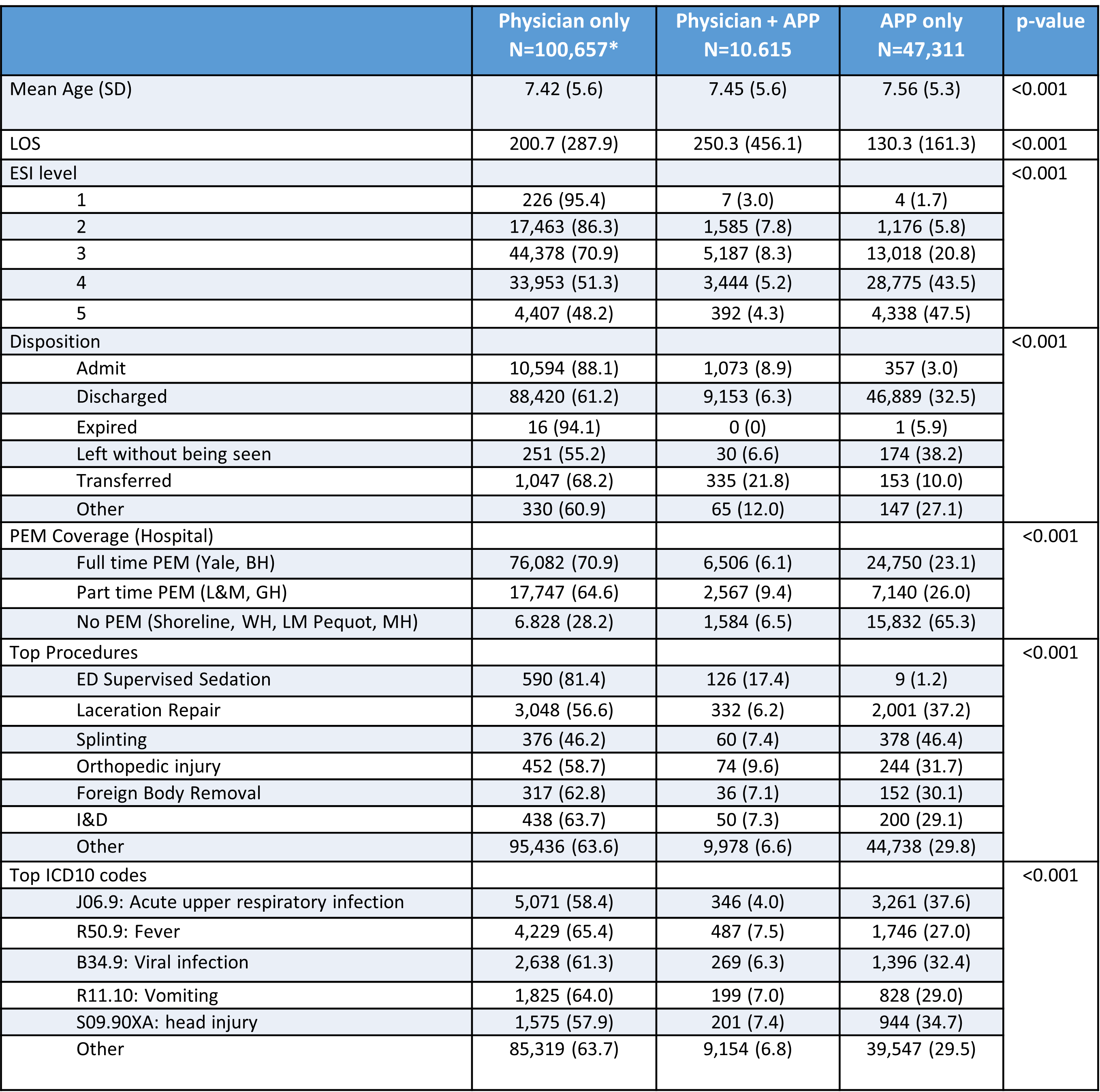Emergency Medicine: All Areas
Category: Abstract Submission
Emergency Medicine XII
27 - The Role of Advanced Practice Providers in Pediatric Emergency Care Across Nine Emergency Departments Within A Single Health System
Monday, April 25, 2022
3:30 PM - 6:00 PM US MT
Poster Number: 27
Publication Number: 27.405
Publication Number: 27.405
Ammarah U. Iqbal, Yale-New Haven Children's Hospital, New Haven, CT, United States; Travis Whitfill, Yale University School of Medicine, New Haven, CT, United States; Gunjan Tiyyagura, yale university, New Haven, CT, United States; Marc Auerbach, Yale School of Medicine, Milford, CT, United States

Ammarah U. Iqbal, MD, MPH
Pediatric Emergency Medicine Fellow
Yale-New Haven Children's Hospital
New Haven, Connecticut, United States
Presenting Author(s)
Background: There are disparities in the quality of care that pediatric patients receive in the emergency setting across the United States. Advance Practice Providers (APPs) have been increasingly incorporated into emergency department (ED) staffing. Little is known about the prevalence and role of APPs practicing pediatric emergency care. These data will serve as a needs assessment for educational interventions targeting APPs working in pediatric emergency care.
Objective: The objective of this study was to describe which patient factors are predictive of being cared for by physicians and/or advanced practice providers across nine EDs, with different staffing models, within one large health system. We hypothesized that APPs 1) care for a significant proportion of all pediatric patients (specifically in EDs with less pediatric emergency medicine (PEM) specialty coverage); 2) are more likely to care for lower acuity patients and perform lower acuity procedures.
Design/Methods: We performed a retrospective chart review using electronic medical records of all encounters in patients < 18 years old seen across 9 EDs within one health care health system from January 2018- December 2019. Data on the age, ESI or acuity level, ICD 10 code, procedures, disposition, and length of stay were extracted from the EHR by provider type (physician +/- APP).
Results: Of the 159,035 patient encounters, 30% were cared for by an APP only, 63% by a physician only, and 7% by a physician/APP dyad (Table 1.) APPs independently cared for mostly lower acuity patients with shorter length of stay and performed 30-40% of simple procedures. APPs were more likely to independently provide care in EDs without PEM specialty coverage (Table 2.) In an adjusted multinomic regression model, APPs were less likely to see severe patients, see patients in an ED with PEM coverage, and see admitted patients compared to physicians (Table 3.) Conclusion(s): In this cohort, APPs cared for 40% of pediatric patients across 9 EDs. These data highlight the importance of integrating APPs into QI/educational initiatives aiming to improve pediatric emergency care. Future work is needed to explore the generalizability of these findings outside of our health system.
Ammarah U Iqbal Curriculum Vitae.pdf
Table 2. Associations Between Provider Type and PED Encounter Characteristics
Objective: The objective of this study was to describe which patient factors are predictive of being cared for by physicians and/or advanced practice providers across nine EDs, with different staffing models, within one large health system. We hypothesized that APPs 1) care for a significant proportion of all pediatric patients (specifically in EDs with less pediatric emergency medicine (PEM) specialty coverage); 2) are more likely to care for lower acuity patients and perform lower acuity procedures.
Design/Methods: We performed a retrospective chart review using electronic medical records of all encounters in patients < 18 years old seen across 9 EDs within one health care health system from January 2018- December 2019. Data on the age, ESI or acuity level, ICD 10 code, procedures, disposition, and length of stay were extracted from the EHR by provider type (physician +/- APP).
Results: Of the 159,035 patient encounters, 30% were cared for by an APP only, 63% by a physician only, and 7% by a physician/APP dyad (Table 1.) APPs independently cared for mostly lower acuity patients with shorter length of stay and performed 30-40% of simple procedures. APPs were more likely to independently provide care in EDs without PEM specialty coverage (Table 2.) In an adjusted multinomic regression model, APPs were less likely to see severe patients, see patients in an ED with PEM coverage, and see admitted patients compared to physicians (Table 3.) Conclusion(s): In this cohort, APPs cared for 40% of pediatric patients across 9 EDs. These data highlight the importance of integrating APPs into QI/educational initiatives aiming to improve pediatric emergency care. Future work is needed to explore the generalizability of these findings outside of our health system.
Ammarah U Iqbal Curriculum Vitae.pdf
Table 2. Associations Between Provider Type and PED Encounter Characteristics

